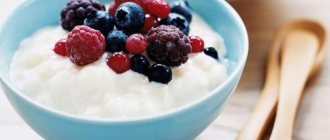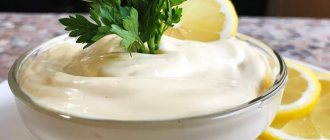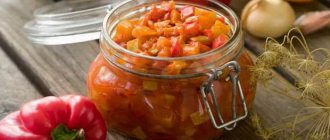Stationary blenders
Models of stationary blenders vary significantly in design and price (from simple and affordable Scarlett, Vitek, Philips to more expensive Bosch, Electrolux, Braun). But their capabilities are almost the same.
Articles on the topic (click to view)
- Metal kitchen rack for appliances
- Instructions for the electric stove “classic plus”
- How to choose an electric stove with 4 burners and an oven for the kitchen
- Sofa in the bay window for the kitchen
- Lighters for gas stoves
- Small enamel kitchen sink
- Electric Turk with automatic shut-off when boiling
Stationary blender models have obvious disadvantages:
- They occupy a dedicated permanent place in the kitchen.
- They can only hold a certain amount of food.
- There are no additional features.
- They do not involve the use of other utensils - all ingredients have to be folded or poured into a bowl.
Their advantages include the fact that a stationary blender works autonomously (it does not need to be held in your hand and controlled), and the lid closes tightly, which significantly reduces the likelihood of splashing.
To ensure that your stand blender lasts as long as possible, do not put hot ingredients into the bowl. This leads to overload of the motor, yellowing of plastic materials and loss of transparency of the bowl.
When loading the bowl, be guided by the marks for the recommended volume of products, do not fill them right up to the lid and do not try to compact them. It is also unsafe for the blender to add too few pieces.
Using the blender is quite simple. Before putting into the bowl, all the ingredients of your planned dish need to be cut into pieces of any shape of approximately the same size. The knives located at the bottom will do the rest - chop and mix all the products to the desired consistency or beat into a homogeneous mass.
Do not open the blender lid while it is running to add anything to the blender.
Using a Stand Blender
There are several rules for using a blender:
- Large foods (such as vegetables and fruits) must be cut before inserting into the device.
- Do not place hot foods in it. You need to wait for them to cool down.
- The grinding mixture should not be dry. Some foods require adding liquid (water, milk, juice). If you are making soup, you can add broth. The main thing is to watch the consistency!
- Frozen foods must also be thawed. Otherwise, the device may be damaged.
- Do not load the device above the specified maximum. Each container has precise marks on the quantity that cannot be exceeded.
- It is strictly forbidden to open the device during operation. Unless you want to take a dip in your smoothie, of course!
Immersion blenders
In terms of their compactness and versatility, immersion blender models are in many ways superior to stationary ones. How to use an immersion blender largely depends on its configuration.
Expert opinion
Smirnova Ekaterina Anatolevna
7 years of experience in interior design, professional architect
The simplest models are equipped with a non-removable attachment with a chopper knife, while the “advanced” ones have bowls with gearbox lids of various functions and capabilities, a whisk, a submersible chopper, graters and shredders.
Using a hand blender is much more convenient and economical. For example, using the immersion knife attachment you can easily prepare a smooth and fluffy puree soup right in the pan without removing it from the stove. It’s also easy to make any sauce (mayonnaise, pesto, adjika, guacamole, etc.) using a whisk or bowl of suitable size.
And for owners of blender models equipped with graters and shredders , it is not difficult to prepare borscht or vegetable salad for a large family. This technique is especially helpful during the winter preparation period, when you need to chop cabbage for pickling, grate carrots for subsequent freezing or drying, and much more.
Using a blender, you can grind almost anything, with the exception of too hard products: coffee beans, frozen pieces of meat or fish, crackers.
If you need to grind fairly hard ingredients, such as horseradish roots, then add a little liquid (cream, beet juice, water or vegetable oil) included in the recipe to the bowl.
Immersion blenders usually come with a special glass designed for grinding products. There is absolutely no need to put everything in it; you can grind it in any container. The only thing is that it must be high and deep enough to prevent splashing.
When working with an immersion knife, you need to use a blender with some caution. Before beating the fruit, it is important to make sure that there are no hard seeds.
If the blade rotation speed is adjustable, then determine the appropriate mode in which it is more convenient for you to use the blender experimentally, starting with minimum power and gradually increasing to optimal.
An immersion blender quickly grinds any vegetables into a puree. An offensive exception is the most beloved and in demand - potato.
Of course, you can grind it, but the result will be completely different. Blender blades have too high a speed, at which the starch is knocked out of the potatoes and the puree acquires the taste and consistency of a sticky paste.
But some models are equipped with a special attachment for making mashed potatoes (with large holes and a plastic knife).
The whisk attachment is designed primarily for beating eggs, and it really does get the whites into stiff peaks quickly. Therefore, many people prefer to use a blender when preparing biscuit dough, meringue or eggnog. The whisk is also good for whipping sour cream creams for home baking.
Do not leave the immersion blender on for long periods of time, especially at maximum power. This can lead to overheating and burnout of the motor. It is better to achieve the desired result in several short steps.
The small bowl is very practical for chopping small portions of nuts or garlic, and the large bowl is for preparing minced meat or fish.
Using an immersion blender
This variety is ideal for daily use. It is suitable for making omelettes, pancake mixes, sauces, pates and much more. Let's look at the rules for using a hand blender:
- Balance of modes. Most models have a “Pipe” mode (maximum speed). Manufacturers recommend gradually moving from minimum to maximum speed.
- Large products must first be cut.
- Do not grind hard foods. Also, when processing berries and fruits, you should remove the seeds to prevent the blender from breaking.
- Do not grind foods that are too hot or too cold.
Blender Care
Since the blender is an electric device, its individual parts cannot be immersed in water or washed in the dishwasher. This applies primarily to the motor unit, which is plugged into the socket, the whisk attachment adapter, and gearbox covers. They can only be wiped with a damp sponge and dried with a towel.
It is better to wash bowls, removable knives, and whisk under warm running water using regular dishwashing detergents. All washed parts must be dried and put back in place so that it is convenient to store the blender in assembled form, which is always at hand and ready for use.
If you want to see how to choose and use a blender correctly, we offer you the following video:
Video
We offer you to watch a video on the topic of the article:
An expert in the field of housekeeping and a master of culinary masterpieces (according to family and friends). I’m used to relying on common sense, everyday experience and women’s intuition.
Found a mistake? Select the text with the mouse and click:
The habit of using an automatic washing machine “sparingly” can lead to the appearance of an unpleasant odor in it. Washing at temperatures below 60℃ and short rinses allow fungi and bacteria from dirty clothes to remain on internal surfaces and actively multiply.
The dishwasher cleans more than just plates and cups. You can load it with plastic toys, glass lamp shades and even dirty vegetables, such as potatoes, but only without using detergents.
Expert opinion
Smirnova Ekaterina Anatolevna
7 years of experience in interior design, professional architect
There are special traps to combat moths. The sticky layer with which they are covered contains female pheromones that attract males. By sticking to the trap, they are eliminated from the reproduction process, which leads to a decrease in the moth population.
The easiest way to remove scale and carbon deposits from the soleplate of the iron is with table salt. Pour a thick layer of salt onto the paper, heat the iron to maximum and run the iron over the salt bed several times, applying light pressure.
Threads made of gold and silver, which were used to embroider clothes in the old days, are called gimp. To obtain them, the metal wire was pulled for a long time with pliers to the required fineness. This is where the expression “to drag out the rigmarole” came from - “to do long, monotonous work” or “to delay the completion of a task.”
Fresh lemon is not only suitable for tea: clean dirt from the surface of an acrylic bath by rubbing with half a cut citrus, or quickly wash the microwave by placing a container of water and lemon slices in it for 8-10 minutes at maximum power. The softened dirt can simply be wiped off with a sponge.
If your favorite things show the first signs of gestation in the form of untidy pellets, you can get rid of them using a special machine - a shaver. It quickly and effectively shaves off clumps of fabric fibers and returns things to their proper appearance.
Stretch ceilings made of PVC film can withstand from 70 to 120 liters of water per 1 m2 of their area (depending on the size of the ceiling, the degree of its tension and the quality of the film). So you don’t have to worry about leaks from neighbors above.
Before removing various stains from clothing, you need to find out how safe the selected solvent is for the fabric itself. It is applied in a small amount to an inconspicuous area of the item from the inside out for 5-10 minutes. If the material retains its structure and color, you can move on to stains.
How to turn it on
Any blender runs on electricity. Points to pay attention to before starting work:
- If the device has been disassembled, before turning it on, make sure that all parts are well connected and screwed in.
- If the device has been previously washed, it should be allowed to dry before turning it on.
- Before turning on, load the contents into the stationary blender. If the model is submersible, lower it into the container where you plan to beat or chop the products.
- Be sure to select the required operating mode. The speed change button is located on the body or on the handle.
- You can start the device with one click on the Power button.
- Never leave the device running. After turning it on, monitor the work process.
How to use an immersion blender?
- If the appliance has just been unpacked, wash all removable parts and accessories with dishwashing detergent and then allow them to dry thoroughly.
- The blender must be assembled using the attachment that is needed at the moment. This could be an attachment with knives, a whisk, a removable bowl for chopping hard products, and so on.
- Load the food into the container you will be working with. For example, pour solids into a bowl and prepare the soup for further pureeing.
- Immerse the working part in the container.
- Set the operating mode (speed or pulse mode).
- Start the device using the special switch or pressing the power button.
Unlike stationary models, submersible ones require direct human participation throughout the entire operating time. When grinding large volumes of product, you need to mark the metal nozzle across the container so that the grinding is uniform.
How to use the attachments
Attachments allow you to diversify the number of functions of the blender. To change the attachment, you must first turn off the blender. Then remove the previous nozzle. And finally, just install a new one. Attachments that are common among housewives:
- whisk This assistant perfectly beats milk and eggs until fluffy. It requires careful handling. Although the whisk is metal, its rotating tip can easily be damaged if used for other purposes;
- attachment for making puree. It has very durable and sharp blades. However, you can puree foods only by boiling them first;
- chopper This attachment copes with very hard products (cheese, nuts, chocolate, onions, etc.);
- hook attachments. They are designed for kneading dough. But, as a rule, manufacturers warn that a blender will not be able to handle excessively stiff dough.
The main rule of caring for a blender is to wash it immediately after use. Dried-on food remains will be much more difficult to remove. To clean, do the following:
- Unplug the plug from the socket.
- Remove the attachment from the immersion blender. And for a stationary one, take out the bowl.
- Wash the attachments and bowl with a sponge and regular dishwashing detergent.
Never wash the housing where the motor and control panel are located. If necessary, simply wipe with a damp cloth.
Sometimes leftover contents may become tightly wrapped around the blades or get caught in the rotor. Then carefully remove them, turning the knives slightly by hand. If the residue cannot be removed, you will have to remove the upper housing and casing to remove the rotor and remove the obstructing residue.
In the case of a stationary blender, you can use this cleaning method:
- Fill the bowl about halfway with warm water.
- Add a few drops of dish soap.
- Turn blender on medium speed.
- After a couple of minutes, turn off and open the bowl. Now the dirt can be easily washed off under running tap water.
It is better to store the blender unassembled, in a dry place. Do not leave the device in the dish dryer. Otherwise, its parts may rust and the motor will become unusable.
Using a blender does not require much effort. And maintenance is not as difficult as caring for an entire food processor. When used correctly, the device can last a long time. This means that cooking will now only bring joy.
Cleaning the device
We've sorted out the use of blenders, but the question remains of how to properly care for the device so as not to cause harm. In general, cleaning a manual and stationary device is not much different. There are a number of tips on how to properly wash the device and prepare it for further use. The process of caring for the device consists of four simple steps:
- Unplug the device from the outlet.
- Separate the attachment of the hand blender from the handle with the motor. Remove the bowl from the stationary one.
- Wash with a sponge and detergent.
- Leave until completely dry.
In order not to harm the device when caring for it, it is important to follow the rules:
- Wash the device immediately after use. This will make it easier to remove food debris.
- Never wash the part of the appliance that contains the motor.
- Store the blender unassembled. This will prevent rust from occurring.
There are two most popular and convenient methods for cleaning a blender.
- Method for cleaning a stationary blender. First you need to remove the device from the outlet and disconnect the container from the motor. Next, fill the appliance bowl with water and add a small amount of detergent. After this, connect the device and leave it at minimum speed for a couple of minutes. Finally, it is important to rinse the bowl with clean water.
- How to clean a hand blender. For this method, you need to prepare a deep bowl with water and a few drops of dishwashing detergent. Place the blender in the bowl and turn on low power. After which, rinse it with water.
The question remains: how to clean the motor itself and the blender handles. After all, it can also become dusty or dirty during the cooking process. In order not to harm the motor, it should be wiped with a damp cloth or wet wipes.
Types of device
Today, household appliance stores offer a huge number of blenders from various companies and with a range of various functions. Housewives' eyes widen when choosing them.
A blender today is not only a device in the classical sense, the function of which is mixing, but also a tool for beating eggs, preparing all kinds of cocktails, crushing ice and vacuum packaging food.
In fact, blenders are divided into two types:
- Stationary. It is very easy to recognize it on store shelves: the device has a stable base that stands firmly on the table surface. The electrical appliance is capable of crushing even the hardest products, including ice. It can also be used for shaking, mixing ingredients, and making cocktails and desserts. Safe and practical, it copes well with the proposed work and has a number of positive features, and a closed container with a tight lid and a chopper buried deep in the bowl helps to avoid splashing when mixing. This blender has another convenient function - a self-cleaning mode, which gives an additional bonus to a busy housewife, reducing the time it takes to clean the device.
- Immersion blender. A convenient and inexpensive device can be seen in almost every home today. It is surprising in its compactness: it will not take up much space in the kitchen. The device kit includes a plastic handle equipped with metal buttons, ideally suited to the size of the hand; it does not slip and fits snugly in the palm. The handle with the nozzle easily drops into any dish, crushing the necessary ingredients in a few seconds. The set is complemented by all kinds of attachments, with which you can prepare even the most complex recipe, from vegetable soups, sauces, side dishes, desserts to preparing minced meat or chopping onions and carrots.
Maintenance that prolongs use
An easy-to-use and easy-to-clean kitchen appliance must, first of all, be thoroughly cleaned of any leftover cooked food. It is advisable to wash them with non-abrasive cleaning products.
Many stationary models have a self-cleaning mode, which greatly facilitates the housewife’s work. In this mode, you just need to pour water into the device and press the button.
There is no need to add any cleaning agent! Next, the glass, which can be easily removed, must be separated from the base and placed in the dishwasher, or rinsed with clean running water. Finally, do not forget to wipe the outer panel with a soft cloth.
Blender functions - how to use them correctly
A blender can easily be called the housewife’s right hand, because it facilitates many processes in preparing various dishes, for example, chopping food, mixing, etc.
Experienced housewives cannot do without it, because they have already appreciated all the charms, advantages and ease of use. But novice housewives, when purchasing this unit, may have a question about how to use a blender so that it becomes a real assistant in the kitchen and works correctly.
To fully familiarize yourself with the operation of such equipment, you can watch video No. 1.
How to use a blender?
It’s worth starting with the fact that there are two types of these devices:
- submersible;
- stationary.
The submersible one is more compact and mobile, and can be used for an unlimited number of products. The main thing is to choose the right bowl. The stationary one, in turn, is designed for a certain number of products, as it comes with its own bowl having a certain volume.
The method of using a blender directly depends on the power of the device. The higher it is, the more products it can chop at one time.
The video will tell you more about how to use a blender in more detail.
It is important to know that if you are going to chop fresh vegetables or fruits, you must first peel and pit them and cut them into small pieces.
When whipping liquid products, carefully select the bowl, as it must be closed. Otherwise, there is a risk that all the products will fly apart in different directions at high speeds of the brander.
The video below will tell you in more detail how to use a blender correctly.
You can safely call it the right hand of a housewife, because it facilitates many processes in preparing various dishes, for example, chopping food, mixing, etc. Experienced housewives cannot do without it, because they have already appreciated all the delights, advantages and convenience of it use. But novice housewives, when purchasing this unit, may have a question about how to use a blender so that it becomes a real assistant in the kitchen and works correctly. To fully familiarize yourself with the operation of such equipment, you can watch video No. 1.
Why do you need a blender or its main tasks?
Expert opinion
Smirnova Ekaterina Anatolevna
7 years of experience in interior design, professional architect
The main functions and tasks of a blender are to chop, puree and mix products. For each function you need to use one or another program.
A blender alone cannot replace all kitchen appliances, but its use allows you to quickly and conveniently grind ingredients. For example, using a blender you can quickly and deliciously make pates, cheese snacks, fresh fruit purees, cocktails, mousses, etc.
d.
When there are young household members in the house, the blender becomes a true helper for the mother, because you can whip up healthy fruit or vegetable purees only with such a device. With a stationary device you can prepare a homemade smoothie, and with a submersible one you can grind fruits, cottage cheese or just berries into a pulp.
Types of blenders
To understand in detail how to use a blender, it is worth knowing about its types. So, such equipment can be stationary or submersible.
The stationary type of blender consists of a base with a mechanism and a transparent bowl that is placed on it and fixed. You need to put the products in this bowl, turn on the required speed of the function and mix the ingredients for a few minutes.
This type of blender allows you to make homemade natural smoothies, crush ice for cocktails, or simply puree fruits. It can also be used to quickly, simply and easily prepare pureed soups by putting boiled vegetables in the appliance and chopping them.
This device will do its job perfectly only when you mix products that release juice, otherwise all the crushed particles of the ingredients will simply stick to the walls. If you still need to puree foods that contain little moisture, then use one little trick - just add a couple of tablespoons of some liquid.
For example, if you are chopping nuts, then add a spoon or two of cream or plain water to them. When chopping such products, they can still stick to the walls, so periodically shake the product or tap the device on the table.
The advantage of a stationary type of blender is that it does not need to be held in your hand, unlike a submersible one, it can work independently.
The submersible type of blender, unlike the one described above, has a somewhat wide range of functions. This device is characterized by a handle with an attachment, at the end of which there are small knives.
Neem can be ground into puree, both small and large portions of food. To use an immersion blender correctly, you should follow these steps consistently.
Prepare the products that you are going to grind into a homogeneous mass, pour them into a special glass (it is included in the kit), immerse the end of the device with knives in the glass and turn it on using the desired key.
Grind the ingredients until you reach the desired consistency. You don’t have to place the products in a special glass, but grind them directly, for example, in a saucepan. Be careful as you may get dirty as there can be a lot of splashing when blending with an immersion blender.
An immersion blender can also replace your mixer, as it usually comes with a whisk. Before whipping cream, cream or egg white, you should remove the immersion leg with a knife, insert the part into which the whisk is inserted into the main handle.
It is worth noting that the whisk in an immersion blender can only beat light masses. For example, he will not be able to beat the dough for making charlotte or biscuit.
Typically, an immersion blender comes with another container, which is smaller in height and wider in width than the glass. It is needed for chopping minced meat or other products, since long knives are inserted into this glass.
Expert opinion
Smirnova Ekaterina Anatolevna
7 years of experience in interior design, professional architect
The whole difference is that in a stationary blender the mixture will turn out almost paste-like, but in such a container with long knives the products will simply be finely chopped. An immersion blender will turn the products into the desired homogeneous mass.
Some housewives use a blender to make puree, both submersible and stationary. Using this technique, it is, of course, easier to chop boiled potatoes, but after that they simply turn into a sticky mass, which is not entirely tasty.
This is explained by the fact that the knives in the product rotate very quickly, which turns boiled potatoes into a beautiful, but tasteless puree.
How to use blender attachments
Immersion blenders are often equipped with additional attachments. And it is not always clear what they are needed for and where they can be used. We'll explain.
So, the main attachment for grinding vegetables, fruits and meat is placed on the leg. You can’t go anywhere without her, because the lion’s share of the work lies with her. The kit may also include a chopper - a small container (100-150 ml) with blades. It is designed for processing nuts, seeds and other hard products.
Manufacturers often provide hand blenders with a whisk for whipping. Of course, you won’t get the same effect as from a mixer, but you will certainly whip up the batter for pancakes. High-end models often come with a variety of chopping attachments, turning the manual unit into a food processor.
The stationary blender is a different story. It won’t beat eggs, and the most you can get in the package is an attachment for crushing ice. If it is not there, it means that it is strictly forbidden to process ice or frozen juice in the unit.
In fact, the answer to the question “how to use a blender correctly?” easier to find than you think. Everything you are interested in is written in the instructions, which are an integral part of any blender. In it, the manufacturer indicated all the features of using the unit, which will help you cook deliciously and keep the device in working order for many years.
Almost every home today has such a miracle technology as a blender. With its help, preparing even the most familiar dishes becomes simpler, faster and more convenient. Video at the end of the page.
But when buying a new household appliance, not every housewife knows how to use a blender correctly. This will be discussed further.
Innovative technologies or wireless blender
Some modern blender models are very convenient to use, as they do not require an electrical connection. According to the principle of operation, they are no different from other models, but their main advantage is that the devices can be taken with you to nature, to the country, or to any other vacation.
For full use, the device must first be charged. The average recharging time is approximately three hours, after which the device can operate for an average of twenty minutes.
Description of immersion blenders
The second type of electrical appliance is a modified high-speed mixer, which is equipped with one blade-knife attachment instead of whisks. It can be described as a long handle with a motor inside and a removable attachment. The simplest configuration includes a knife attachment, while more complete ones contain a whisk and other various attachments, bowls (narrow and tall, like a stationary device) and even storage containers. Unlike standard ones, these devices can even chop greens, finely chop onions into cutlets, turn small amounts of meat into minced meat, and even transform dried pieces of bread into breadcrumbs. And this is only using a standard nozzle. The advantage of such a device is that the volume of products to be processed is not limited; the blender can be immersed either in a small cup or in a large pan, preparing puree soup for the whole family at one time. Bowls and containers should be chosen with high walls to avoid splashing.
What not to do
You cannot grind hot foods with a stationary blender, as this can lead to overheating of the motor and darkening of the plastic in the bowl. This device cannot always cope with crushing ice - for such a function the equipment must have more power.
You won’t be able to chop fresh herbs using this technique either. It is not recommended to load the device to the very edges, because during operation the crushed mass may spill out.
It is not recommended to run an immersion blender for a long time, as the motor inside the device can quickly overheat. It should not be immersed in hot foods.
Also, such a blender cannot grind those products that have a solid structure and those that do not release liquid. Do not allow the product to be turned on idle, because this way you can simply break it.
Before chopping foods with any type of blender, first clean them and cut them into small pieces, because the equipment may not be able to cope with large ingredients on its own.
After using the blender, you should definitely wash it immediately so that food residues do not remain on the blades, because in the future they can disrupt the operation of the equipment. Remember that the “leg” with the mechanism that comes with the immersion blender cannot be washed.
If it does get dirty, the right thing to do is simply wipe it with a damp towel or kitchen napkin. If you still have questions about how to use a blender, then watch training video No. 2.
Using a hand blender
Manufacturers recommend using it for grinding ingredients with a non-solid structure. For example, coffee with crackers cannot be ground with this device. It is recommended to add a small amount of water to the bowl where the grinding takes place.
Most manufacturers offer them complete with bowls or glasses in which grinding is carried out.
When using your own container, you must remember that during work, splashes may fly in all directions, which will cause contamination of the surfaces around. Therefore, it is recommended to use deep bowls.
The use of this type is regulated by instructions indicating the following:
- Do not put a large amount of food into the bowl to chop. Their volume should ensure coverage of the lower part of the device, which takes part in the processing process.
- Do not use a blender to blend very hot ingredients. You should wait until they cool down slightly to a temperature of 70 degrees Celsius.
- If you need to beat fruits, it is recommended to check them for seeds before doing so. If there are any, they should be removed before downloading.
- If it is not known in advance what speed should be used for processing, then it is recommended to start with the minimum value. Then gradually increase it.
- You should not attempt to make mashed potatoes. As practice shows, it turns out tasteless even despite excellent whipping.
- You can beat egg whites with it, but only if the package contains a special whisk.
Stationary type
- In a couple of seconds it grinds any food into liquid porridge.
- Ideal for preparing sauces and a variety of cocktails.
- Each program is responsible for its own grinding mode.
- Requires dedicated space in the kitchen.
- The volume of loaded products is limited to the bowl.
- The grinding process is fully automated.
Most quality blenders available to the masses are made by Bosch or Polaris. These companies manufacture both submersible and stationary devices equipped with all the advanced features. Even if your device is made by another manufacturer, its operating pattern will not differ much from the leading Bosch models.
Look at the photo below, this is what different models of blenders may look like.
Description of stationary blenders
These kitchen electrical appliances are divided into two types: submersible and stationary. Let's describe the latter first. A stationary blender is a stable base, a body with a built-in electric motor, on top of which a tall narrow bowl with a closing lid and paddle blades at the bottom is installed. The walls of the bowl can be made of glass (the most durable and practical to use) or plastic. This material has the following disadvantage: high temperatures can cause the bowl to darken, so you should not grind hot foods in it. How to use a stationary blender correctly? Finely chopped products are placed in the bowl, the lid is closed, plugged in and the button is pressed. Cooking time depends on the volume and density of the food. This blender is ideal for making milkshakes with ice cream and berries, fruit and vegetable smoothies, whipping pancake batter, and crushing ice for cocktails.
Submersible models
Proper use of a kitchen appliance extends its life by many years. An immersion blender allows the cook to blend anything. But if you do not follow the restrictions set by the manufacturer, the device will quickly break down.
- The device has a cutting part. During grinding, the lower part of its stem must be completely immersed in the product. If the stem is sticking out, it means there is too little food in the container to grind safely and the device cannot be used.
- The device “does not like” boiling water and foods hotter than 70 degrees Celsius. You should not use it to chop vegetables or meat that you have just finished cooking.
- Avoid getting hard parts under the handle of the device. Never grind frozen meat, hard biscuits or coffee beans. If you need to puree fruit, such as a peach, first cut it and remove the hard pit.
- Products need to be crushed in different modes, depending on their density and consistency. If you do not know which program is suitable for the contents of the container, run the device at minimum speed, and then gradually speed up. Do not use unusual attachments for standard grinding types.
Professionals who have been using Bosch and Polaris for years to prepare the most delicious dishes have noticed a couple of tricks in operating the devices. Get to know them too:
- Despite the fact that according to the rules you cannot grind hard products with the device, you can still get around the restriction. If you can cut something into thin slices with a knife, then a blender can handle this product. To grind the product (for example, horseradish) you will have to prepare it. Chop it first with a knife to make it easier for the device to handle. Then add a little water to the container: this will ensure that the cutting leg operates more smoothly.
- The device is ideal for preparing many dishes, but for some reason we cannot combine it with mashed potatoes. Do not waste good potatoes and beat them in some other way: mashed potatoes, crushed by machine, lose their amazing taste properties.
- If the device was supplied with a container from the manufacturer, be guided by its depth when selecting a pan for whipping. This way you will protect yourself from splashes and dirt.
Only an immersion blender can cope with whipping egg whites. Its attachments can be of a wide variety of shapes, including the shape of a whisk. Look at the photo, there are such add-ons for this type of devices.
If you still have questions, watch the video on how to use an immersion blender.
What should you not do with a submersible model?
Safety precautions when working with an immersion blender
To avoid wasting time on repairing the device, just follow simple rules:
- Don't overdo the turbo speed. This mode is for short-term use only. If the blender is constantly running on it, the motor will simply burn out.
- Remember to chop large and hard foods first.
- Do not knead mashed potatoes without a special attachment. Otherwise, the dish will come out too homogeneous and unappetizing.
- To use your immersion blender correctly, do not handle hot foods. Wait for them to cool to at least 70°C.
- If you need to work with foods with a small percentage of liquid, be sure to add some water or broth to the mixing container.
- Do not clean or touch the attachments or blades while the device is in operation. There is a high risk of causing serious injuries and cuts to yourself.
- Do not use for kneading dough that is too thick. This consistency causes the engine to operate at high speeds, which quickly damages the device. Even if the kit includes dough beaters, they are only suitable for medium-thick dough.











